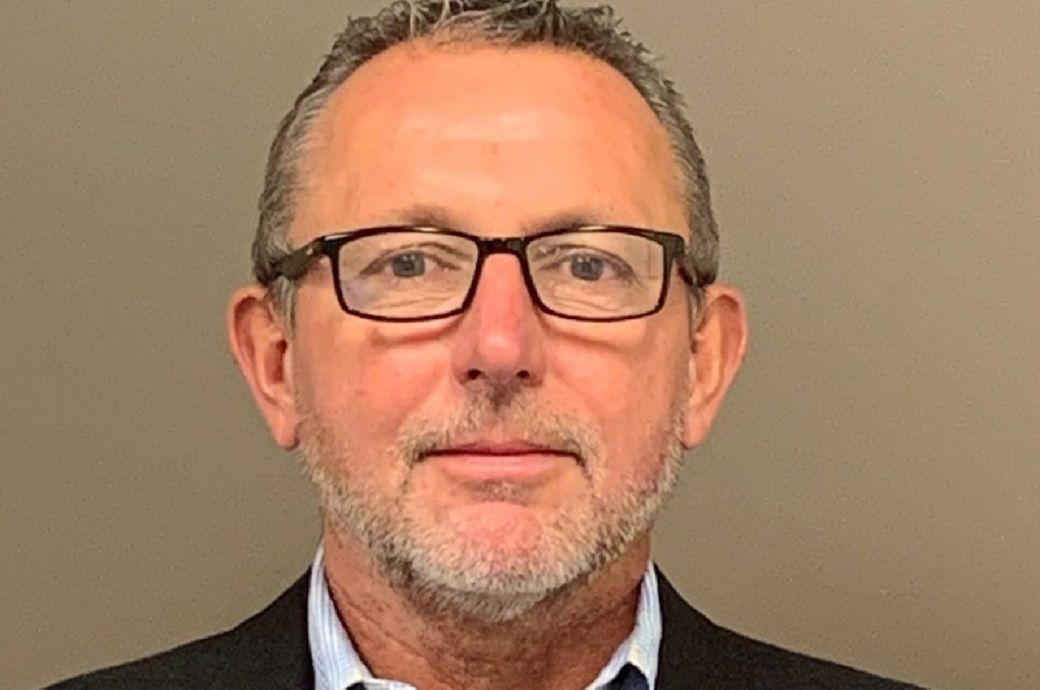Tech
Boom or bubble: How long can the AI investment craze last?

The staggering investments in artificial intelligence keep coming: Last week, AI chip giant Nvidia announced it would invest $100 billion to help OpenAI, the frontrunner in generative AI, build data centers.
How are these enormous sums possible when the returns on investments, at least for now, pale in comparison?
Huge investments
AI-related spending is soaring worldwide, expected to reach approximately $1.5 trillion by 2025, according to US research firm Gartner, and over $2 trillion in 2026—nearly 2% of global GDP.
Even though tangible returns fall short of the investments going in, the AI revolution appears unstoppable.
“There’s no doubt among investors that AI is the major breakthrough technology”—on par with harnessing electricity, said Denis Barrier, head of investment fund Cathay Innovation.
Silicon Valley’s mindset “is more about seizing the opportunity” than worrying about any risks, he said.
Geopolitical tensions are helping drive the frenzy, primarily to build massive data centers housing tens of thousands of expensive chips that require phenomenal electrical power and large-scale, energy-hungry cooling.
From 2013 to 2024, private AI investment reached $470 billion in the United States—nearly a quarter in the last year alone—followed by superpower rival China’s $119 billion, according to a Stanford University report.
Just a handful of giants are on the receiving end, with OpenAI first in line.
In March 2025, ChatGPT’s parent company raised approximately $40 billion, bringing its estimated valuation to around $300 billion, according to analysts.
‘Circular funding’
OpenAI is now the world’s most valuable company, surpassing SpaceX, worth $500 billion in a deal for employees to sell a limited number of shares.
The company led by CEO Sam Altman sits at the center of an AI investment bonanza: It oversees the Stargate project, which has secured $400 billion of the $500 billion planned by 2029 for Texas data centers spanning an area the size of Manhattan.
The White House-backed consortium includes Softbank, Oracle, Microsoft and Nvidia.
Nvidia, which completed over 50 venture capital deals in 2024 according to PitchBook data, is often chided for practicing “circular funding”—investing in startups that use the funds to buy its chips.
Some analysts criticize this as bubble-fueling behavior.
The OpenAI deal “will likely fuel those concerns,” said Stacy Rasgon, a Bernstein Research analyst.
In the first six months of 2025, OpenAI pulled in around $4.3 billion in revenue, specialist outlet The Information reported this week.
Therefore, unlike Meta or Google with substantial cash reserves, OpenAI and competitors like Anthropic or Mistral must be creative in their search for funds to bridge the gap.
For AI believers, an explosion in revenue is only a matter of time for a company whose ChatGPT assistant serves 700 million people—reaching nearly 9% of humanity less than three years after launch.
‘Up in smoke’
Nothing is certain, however.
Feeding AI’s computing appetite will cost up to $500 billion annually in global data center investments through 2030, requiring $2 trillion in annual revenues to make the expenses viable, according to consulting firm Bain & Company.
Even under optimistic assumptions, Bain estimates the AI industry faces an $800 billion deficit.
OpenAI itself plans to spend over $100 billion by 2029—meaning turning a profit is still a ways off.
On the energy front, AI’s global computing footprint could reach 200 gigawatts by 2030—the annual equivalent of Brazil’s electric consumption—half of that in the United States.
Despite the daunting figures, many analysts remain optimistic.
“Even with concerns about a possible ‘AI bubble’… we estimate the sector is in its 1996” moment during the internet boom, “absolutely not its 1999” before that bubble burst, said Dan Ives, a Wedbush Securities analyst.
Long-term, “many dollars will go up in smoke, and there will be many losers, like during the internet bubble, but the internet remained,” said the Silicon Valley investor.
© 2025 AFP
Citation:
Boom or bubble: How long can the AI investment craze last? (2025, October 2)
retrieved 2 October 2025
from https://techxplore.com/news/2025-10-boom-ai-investment-craze.html
This document is subject to copyright. Apart from any fair dealing for the purpose of private study or research, no
part may be reproduced without the written permission. The content is provided for information purposes only.
Tech
Vaping Is ‘Everywhere’ in Schools—Sparking a Bathroom Surveillance Boom

It’s this creeping surveillance that gives some students pause, even those who told The 74 they otherwise support vape detectors in bathrooms. The possibility of unknown capabilities with the sensors is “very scary to me” said Moledina, the Austin teen, who worries about a future where bathrooms come with cameras.
“Just knowing that there is vape smoke in the bathroom doesn’t really help you because the administrators already know it’s happening, and just by knowing that it’s there isn’t going to help them find out who is doing it,” he said. “So my concern is that, at the end of the day, we’re going to end up having cameras in bathrooms, which is definitely not what we want.”
Minneapolis educators have used surveillance cameras in conjunction with the sensors to identify students for vaping in the bathrooms, discipline logs show.
In February, for example, a Roosevelt High School senior was suspended for a day based on accusations they hit a weed vape in the bathroom. Officials reviewed footage from a surveillance camera outside the bathroom and determined the student was “entering and exiting the bathroom during the timeframe that the detector went off.” They were searched, and administrators found “a marijuana vape, an empty glass jar with a weed smell and a baggie with weed shake in it.”
That same month, educators referred a Camden High School student to a drug and alcohol counselor for “vaping in the single stall bathrooms.”
“After I reviewed the camera it does show [a] student leaving out that same stall bathroom,” campus officials reported.
Gutierrez, the 18-year-old from Arizona, said she quit vaping after she was suspended and now copes with depression through positive means like painting. What she didn’t do, however, was quit because she received help at school for the mental health challenges that led her to vape in the first place.
She stopped vaping while she was suspended, she said, because she was away from her friends and lacked access. She was frightened into further compliance, Gutierrez recalled, by the online lessons depicting vaping as a gross, gooey purple monster that would poison her relationships.
“Yes I stopped, but it wasn’t a good stop,” she said. “I didn’t get no support. I didn’t get no counseling. I stopped because I was scared.”
Tech
Lectra appoints John Brearley as president of Americas

Lectra, leader in industrial intelligence technology solutions for players in fashion, automotive, and furniture, announces the appointment of John Brearley as President, Americas, effective October 1, 2025. He becomes a member of the Group’s Executive Committee.
Lectra has appointed John Brearley as president, Americas, effective October 1, 2025.
A 40-year industry veteran and long-time Lectra leader, he will join the executive committee and oversee operations in a region contributing 33 per cent of sales.
Brearley aims to drive growth, strengthen customer ties, and support digital transformation across fashion, automotive, and furniture markets.
Lectra currently operates in 31 countries in the Americas region, with 400 employees in 7 locations – including Tolland, one of the Group’s three production sites – and more than 8,000 customers. The Americas play a crucial role for Lectra, contributing to 33% of the Group’s sales in 2024 and serving a diverse portfolio of customers in the fashion, automotive, and furniture industries, as well as in other industries.
“We look forward to John Brearley continuing his impactful journey within the Group as he steps into this pivotal leadership role”, says Daniel Harari, Chairman and Chief Executive Officer of Lectra. “With his extensive experience in the industry and a proven track record of leading our teams to support our customers and drive growth in Lectra’s recurring business, John is well-positioned to lead our Americas teams toward accelerated growth, strengthened customer relationships, and achieve our strategic objectives.”
Throughout his 40-year career, John has played an instrumental role in shaping a responsive, customer-centric culture within the organizations he has served. He began at Investronica where he managed the business in the UK, before moving to the US in 2001 to lead the North American division. Following Investronica’s acquisition in 2004 by the Lectra group, John took over the responsibility of growing the Consumables and Parts activity. His expertise in customer relations earned him the role of Vice President of Customer Care for Lectra Americas in 2007. In 2020, John was promoted to Senior Vice President of Customer Success for the region.
“It is an honor to take on this new role at such a strategic moment for Lectra and our customers in the Americas”, says John Brearley. “My focus will be on supporting customers and ensuring that we empower them not just to meet the challenges of Industry 4.0, but to thrive—growing more resilient, agile, and sustainable through every step of their digital transformation.”
Note: The headline, insights, and image of this press release may have been refined by the Fibre2Fashion staff; the rest of the content remains unchanged.
Fibre2Fashion News Desk (HU)
Tech
I Keep Cooking Thanksgiving! Here’s the Best Holiday Meal Delivery

Making a full Thanksgiving feast for guests can be daunting, for some perhaps even terrifying. The world, and especially Hallmark movies, is full of holiday disaster stories: burnt turkeys, failed desserts, steamed hams. But I’m not bragging when I say that the first Thanksgiving dinner I prepared for my extended family—a little early, this year—was an unmitigated success.
My aunt couldn’t stop talking about the black pepper in the biscuits and the sage on the carrots. My uncle went in for the turkey and the apple-sausage stuffing. My father didn’t speak at all, unless prompted. He just ate and ate. This was a compliment.
But of course, I had cheated. I had ordered my Thanksgiving in the mail—one of the new breed of Thanksgiving meal kits.
The meal was genuinely home-cooked, of course, prepared mostly from scratch. But the entire seven-platter feast—its ingredients and recipes—had arrived two days before, in a box large enough to house a primal cut of beef. It was Thanksgiving in a box: a $200 “Chef’s Table Thanksgiving” meal kit available from sister meal delivery plans Sunbasket and Gobble.
The spread from Sunbasket was vast and generous. The table contained a nearly 3-pound roast of turkey, mounds of mashed potato, pebbled cranberry compote, roasted carrots dressed in miso-sage butter, brussels sprouts dappled with pecorino romano and pancetta, an endless platter of fennel-apple-sausage-stuffing, Gruyère black-pepper biscuits caked more than an inch tall, a tureen of deep brown turkey gravy, a ginger apple crisp waiting in the wings.
Sunbasket is among a new bounty of meal kit companies that aim to ease the stress of the holidays by doing the planning and the shopping for you—big meal boxes tailor-made for those who still want to make a home-cooked meal but for whom the prospect of planning a vast and complicated feast is prohibitive. In fact, two weeks later I cooked another Thanksgiving meal from Blue Apron, this time for my sister’s family.
Here was my experience with Sunbasket and Blue Apron—and some of the other Thanksgiving meal delivery options to get your whole Thanksgiving meal delivered to your home.
Want meal kits for more everyday occasions? See WIRED’s guides to the best meal delivery services, and the best plant-based meal delivery kits.
The Blue Apron à la Carte Thanksgiving (and Holiday) Meal Kit
Available till December 29. Order by November 19 to ensure delivery by Thanksgiving.
Blue Apron, one of the OG meal kits in the US, has undergone a wholesale transformation this year. One of the biggest changes is that subscriptions are no longer required, and à la carte meal ordering is possible—indeed, it’s now my favorite no-subscription meal kit offering. What this means is that for this Thanksgiving, you can order individual Thanksgiving recipe kits to prep fresh at home, without ever setting foot in a crowded grocery store.
That means roasted grape and goat cheese salad ($12), a big ol’ turkey breast with gravy and cranberry sauce ($50), rosemary herb stuffing ($15), a truly excellent casserole worth of truffle-oiled Southern mac and cheese ($20), almond apple crumb pie ($15), brown butter mashed potatoes ($8), challah rolls with maple ($8) and roasted brussels sprouts with pistachios, ($10). I made all of these recipes for my sister’s family and our parents, a little early this year—and it was a surprisingly delicious feast fit for at least eight people. Probably even 10, if you add an extra order of mashed potatoes.
-

 Tech1 week ago
Tech1 week agoFrom waste to asset: Turning ethanol production CO₂ into jet fuel
-

 Tech4 days ago
Tech4 days agoNew carbon capture method uses water and pressure to remove CO₂ from emissions at half current costs
-

 Politics5 days ago
Politics5 days agoBritish-Pakistani honoured for transforming UK halal meat industry
-

 Sports4 days ago
Sports4 days agoTexas A&M officer scolds South Carolina wide receiver after touchdown; department speaks out
-

 Business4 days ago
Business4 days agoThese 9 Common Money Mistakes Are Eating Your Income
-

 Business5 days ago
Business5 days agoWhat’s behind Rachel Reeves’s hokey cokey on income tax rises?
-

 Fashion6 days ago
Fashion6 days agoAdidas & Patrick Mahomes expand NIL programme with Texas Tech athletes
-

 Politics6 days ago
Politics6 days agoInternet freedom declines in US, Germany amid growing online restrictions





















